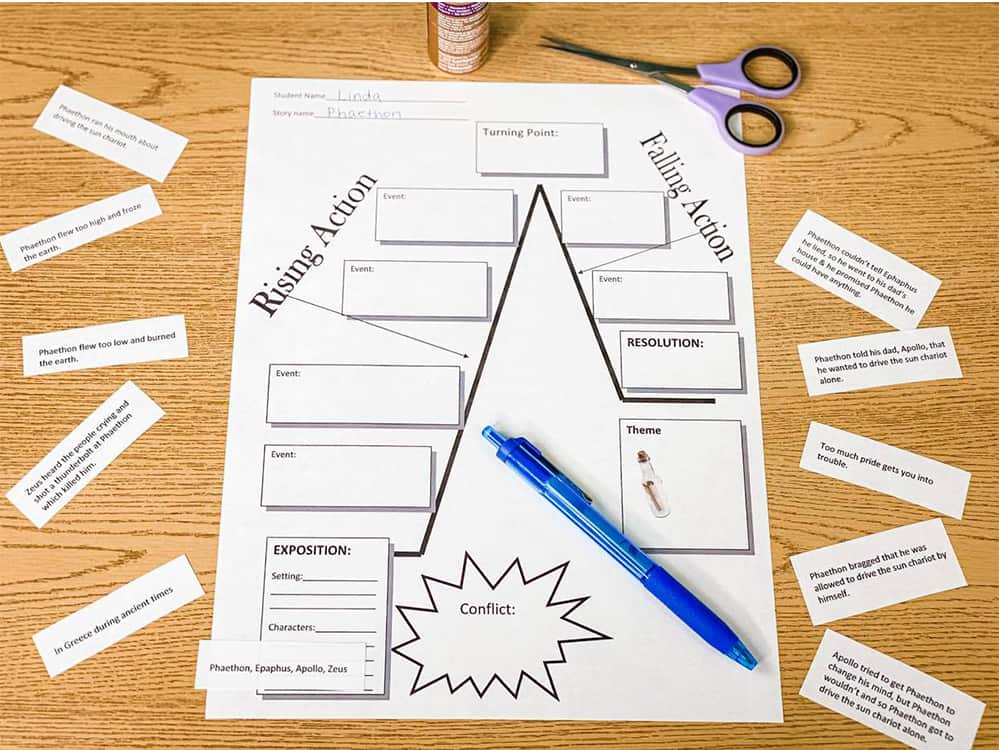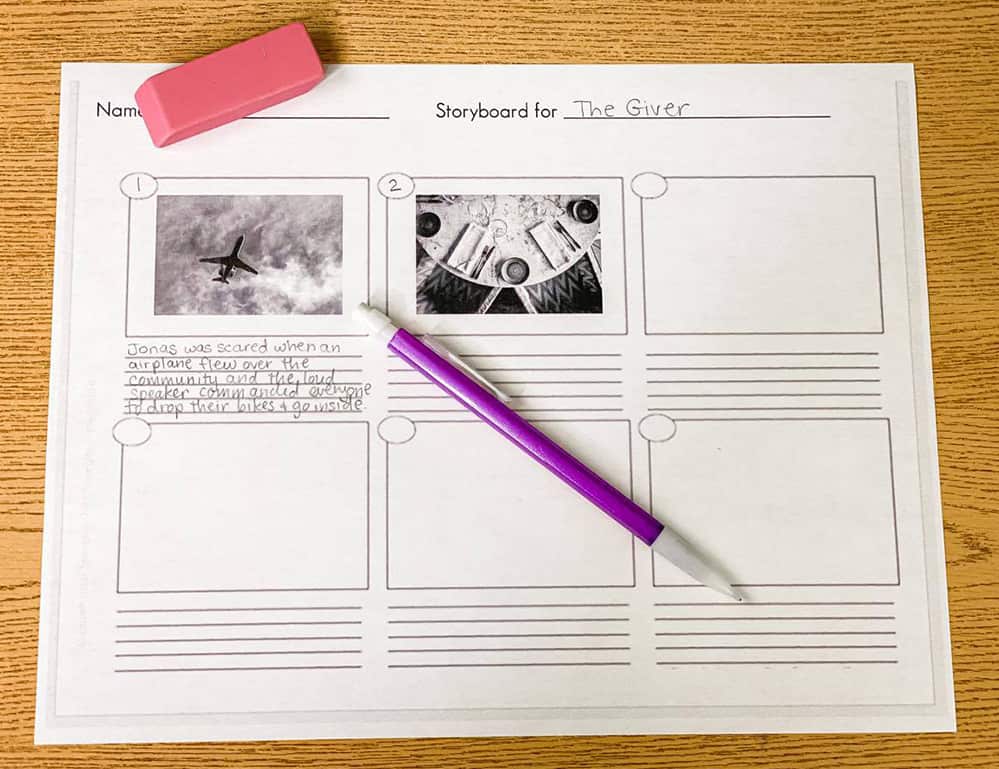My struggling readers are challenged by keeping track of all the events in most longer novels that we read in class. Some struggle because they spend so much time and energy just to read the words on the page that their focus is more on understanding the words than comprehending the story. Others struggle with visualization of the story. To help them keep track of and understand the plot, I use one of the following three methods.
1. Story Map/Plot Diagram

Most teachers have seen the triangular “plot mountain” before. One way to utilize this is to give all students a copy of one and then project it on a screen. As the class reads various events, stop and discuss each one, then record it on the plot diagram on the screen. Next, students will record that information on their own copy. This is a great process to use when first introducing the concept of the plot diagram.
Later, as students become more adept, I make plot events beforehand, put them on strips of paper (or in text boxes for digital learning), and let students place them on the plot diagram. This can be completed independently or with a partner. After everyone is finished placing the events on the plot diagram, students share where they placed various events, and we come to a consensus on placement through class discussion. Finally, students adjust their event placement as necessary.
2. Storyboard

Students who struggle with reading also tend to struggle with writing. This may be a reason to try a storyboard before you try a plot diagram. A storyboard tracks events from beginning to end, like a plot diagram; however, it supports the struggling learner by focusing on images with a small description.
The idea is that the student determines an image to represent the chapter they read and explains the image with a caption. There are an image and caption for each chapter of the text. This allows students to focus on the visualization part of reading, which is a key to comprehension. Generally speaking, the process of visualization is most like imagining the story as you read it—as if you were watching the movie version of it in your head.
3. Guided Notes
Guided notes provide scaffolding by supplying students with small amounts of information to get them thinking about and engaging with the subject matter. In the case of tracking plot, guided notes help students who struggle by giving them a kind of breadcrumb trail to follow as they progress through the text.
The guided notes that I like to use are two-column notes with details on the right and questions on the left. I make these notes ahead of time and write important questions on the left that can be answered by reading the chapter. The students’ job is to write the answers on the right. Then at the bottom of the notes page, there is a place for a summary of the chapter.
At the beginning of the literature study, I model how we read the questions first so that we set a purpose for reading. Then as we read, if we find the answer to a question, we pause and write it in the note. When we finish the chapter, we write a summary together. As we move on, I gradually release students to answer questions on their own as they become more proficient with the process.
When deciding which activity to use, teachers need to think about their students’ areas of struggle. Based on student needs, one type may be more appropriate than another at the outset. However, using all of these activities over the course of a year can help build all students’ skills and help them become more capable readers.
This includes being able to use this knowledge in concert with other parts of literature analysis, including determining theme. Once a student understands the plot, it’s much easier for them to identify theme, which is based on what the events of a story reveal to the reader.
Putting this all together: Struggling readers need support to increase their proficiency, and these three strategies for tracking plot will give them that assistance to advance their skills and improve their ability to analyze different aspects of literature.



